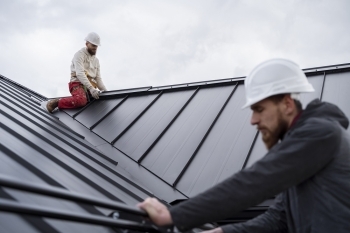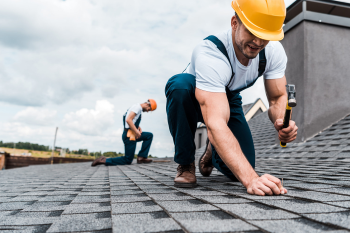
Roofing Safety Tips: Protecting Yourself on the Job
Roofing is a physically demanding and hazardous job that requires proper safety measures to prevent accidents and injuries. Whether you're an experienced roofer or just starting in the industry, prioritizing safety should always be at the forefront of your mind. In this article, we'll discuss essential roofing safety tips to protect yourself and your team while working on rooftops.
1. Proper Training and Certification
Before stepping onto a roof, ensure that you and your team members have received proper training in roofing safety protocols. Attend safety workshops, obtain relevant certifications, and familiarize yourself with industry best practices. Knowing how to use safety equipment and recognizing potential hazards can significantly reduce the risk of accidents.
2. Utilize Safety Equipment
Always wear personal protective equipment (PPE) while working on the roof. This includes a hard hat, safety goggles, gloves, and slip-resistant shoes with proper traction. Additionally, use safety harnesses and lifelines when working at heights to prevent falls.
3. Inspect the Roof Before Starting
Before starting any roofing work, conduct a thorough inspection of the roof surface. Look for weak spots, damaged areas, or debris that could pose a safety risk. Repair or address any issues before proceeding with the project.
4. Weather Considerations
Avoid working on the roof during adverse weather conditions such as rain, snow, or strong winds. Slippery surfaces and reduced visibility can increase the risk of accidents. Plan your roofing schedule around favorable weather to ensure a safer working environment.
5. Keep the Work Area Tidy
Maintain a clean and organized work area on the roof. Keep tools, materials, and debris properly secured to prevent tripping hazards. Utilize tool belts or bags to keep your hands free while climbing or walking on the roof.
6. Use Ladders Safely
When using ladders to access the roof, ensure they are in good condition, and set them up on stable and level ground. Extend the ladder at least three feet above the roofline for a safe transition. Always maintain three points of contact while ascending or descending the ladder.
7. Communicate Effectively
Establish clear communication channels between team members while on the roof. Use hand signals or two-way radios to coordinate movements and convey safety-related information. Effective communication enhances teamwork and reduces the risk of accidents.
8. Be Mindful of Electrical Hazards
Pay attention to nearby power lines and electrical equipment. Keep a safe distance from electrical sources to prevent accidental contact. If your roofing project involves working near power lines, consult with a professional electrician to ensure safe practices are followed.
9. Hydration and Breaks
Roofing work can be physically demanding, especially in hot weather. Stay hydrated by drinking plenty of water throughout the day. Take regular breaks to rest and recharge, reducing the risk of fatigue-related accidents.
10. Never Work Alone
Avoid working alone on a roof. Having a team member present provides an extra layer of safety and support in case of emergencies. Collaborating with others ensures that someone can seek help or assist in case of an accident.
Conclusion
Safety should be the top priority for any roofing professional. By following these roofing safety tips and adopting a proactive approach to risk management, you can create a safer work environment for yourself and your team. Remember that investing in safety training, using proper equipment, and maintaining constant vigilance can significantly reduce the likelihood of accidents and injuries while working on the roof. Stay informed about safety best practices and encourage a safety-conscious culture among your roofing crew to ensure everyone returns home safely after a day's work.






